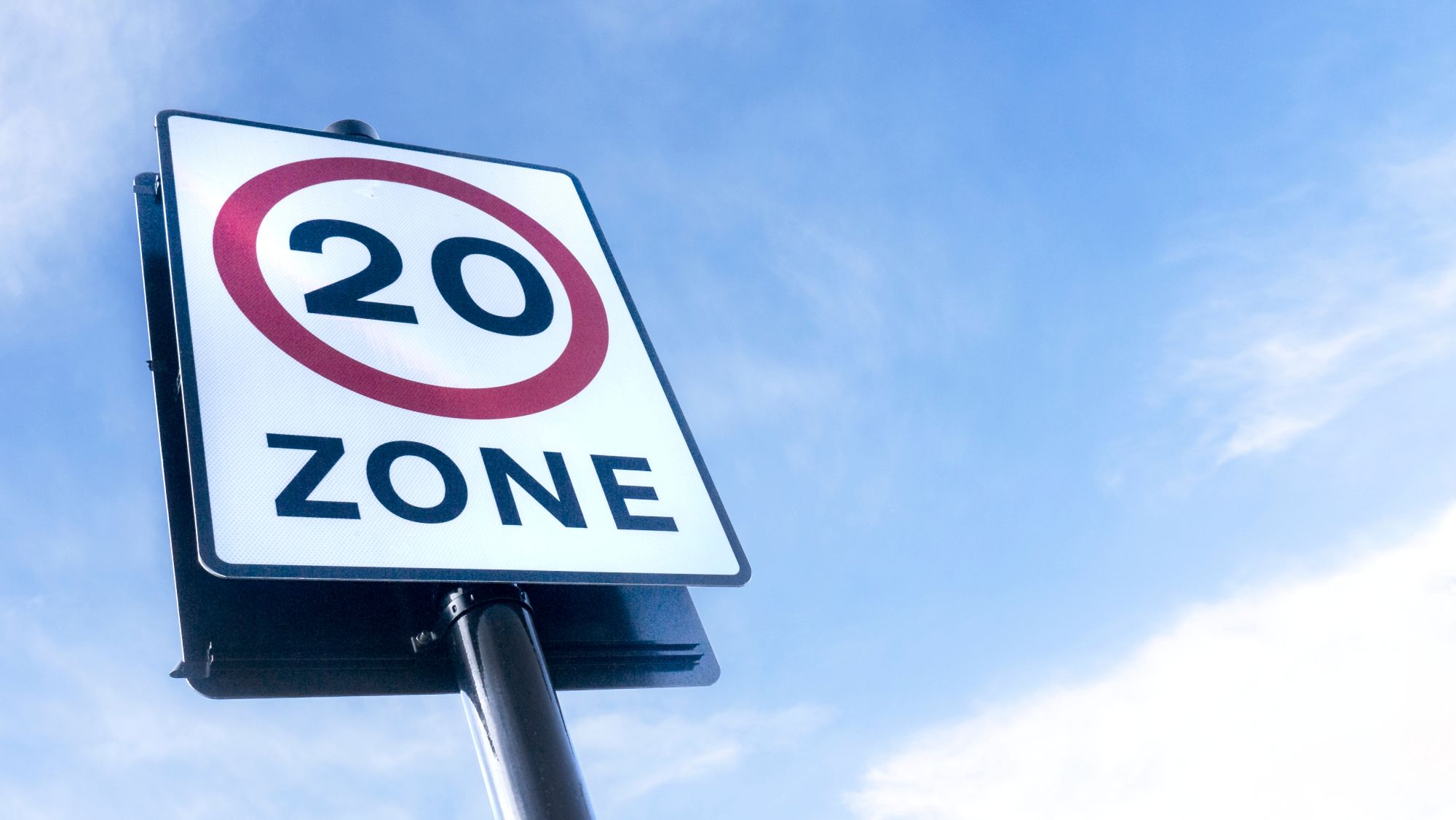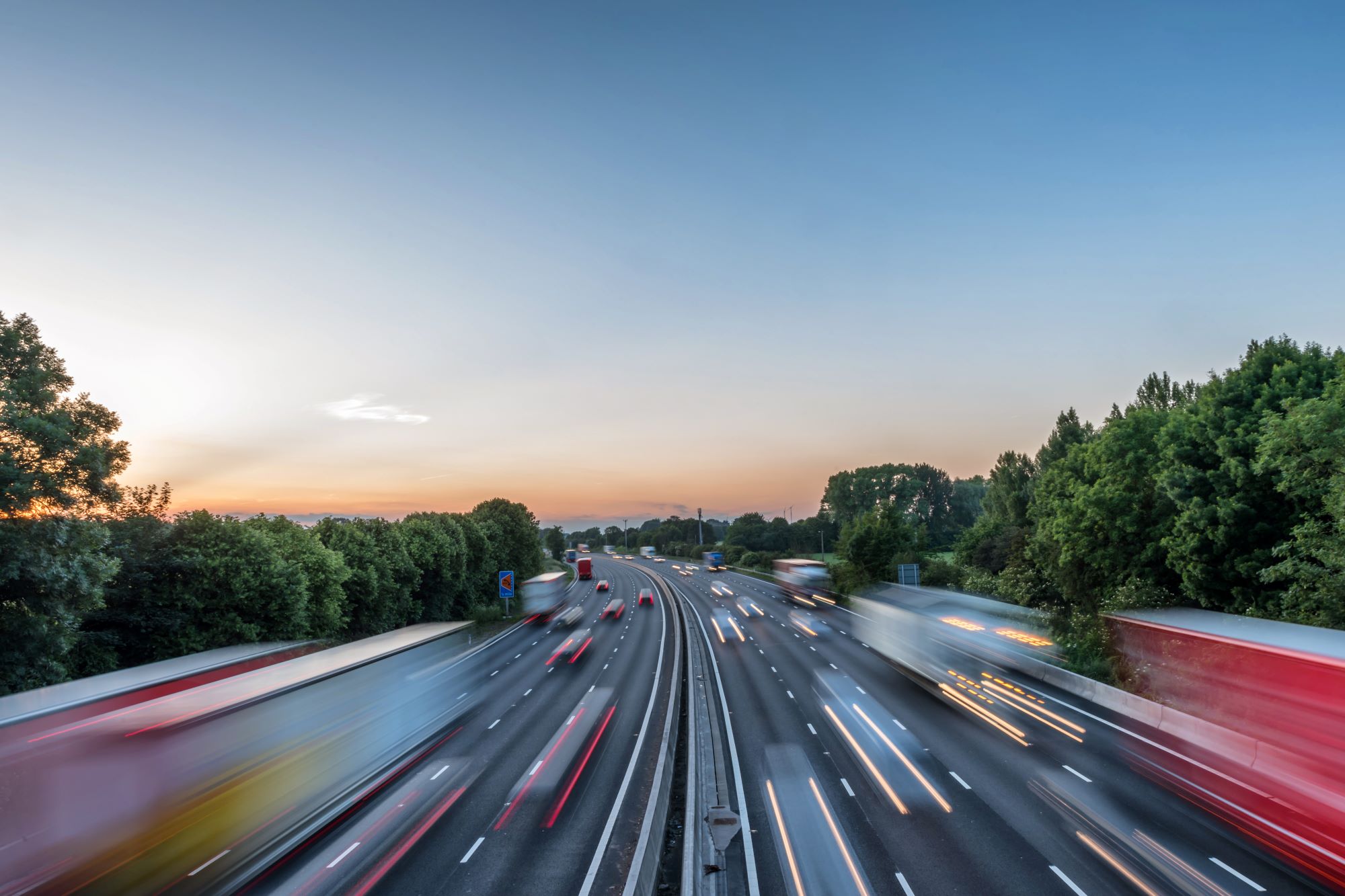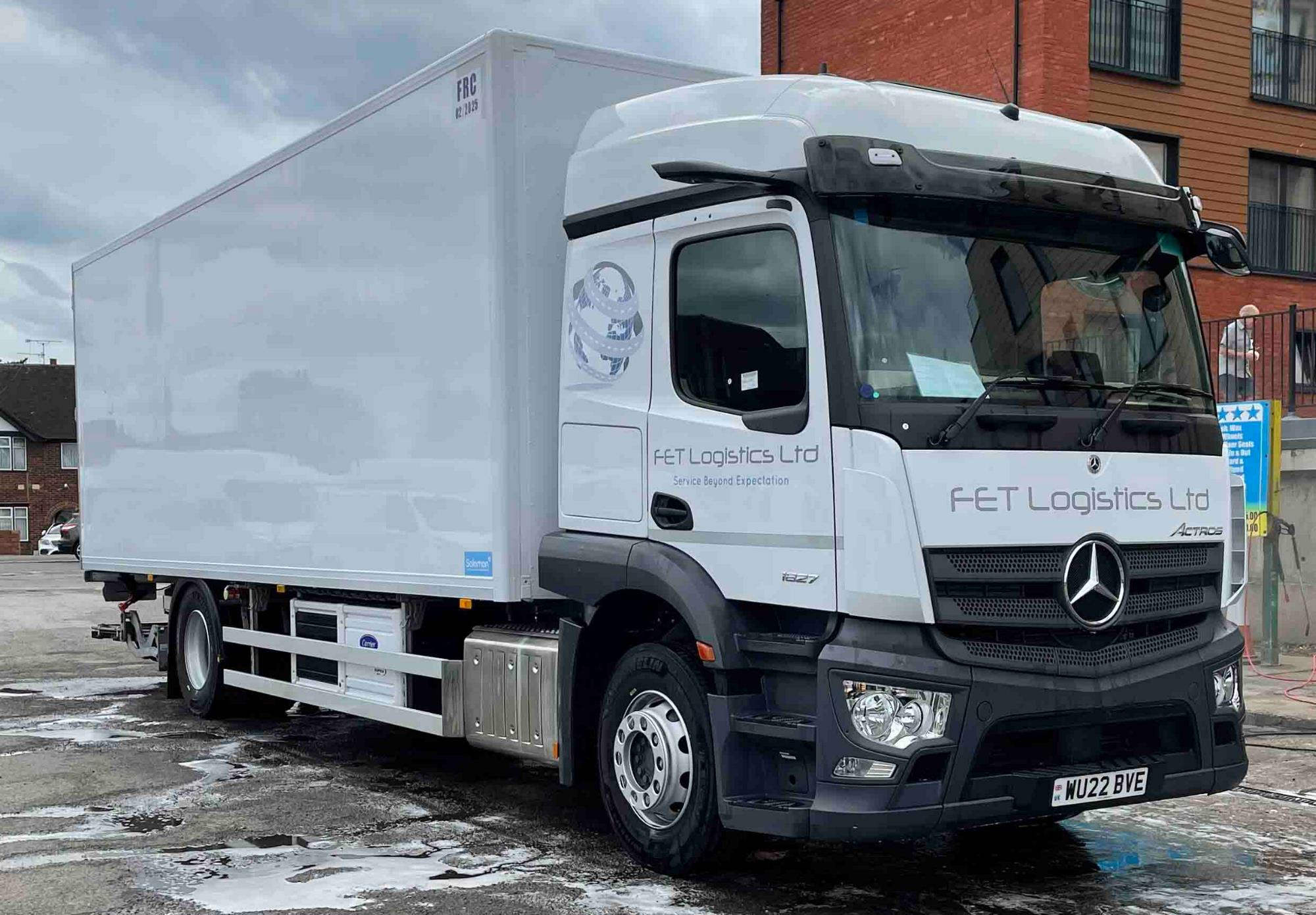
Susie Jones
Welche Auswirkungen haben Geschwindigkeitsbegrenzungen von 20 km/h auf Fuhrparks?
Erstellt: 16.04.2025
•
Aktualisiert: 16.04.2025
Im Jahr 2023 waren 188 Lkw in Kollisionen mit tödlichem Ausgang verwickelt, ein Rückgang gegenüber 2022, aber dennoch eine besorgniserregende Statistik. Diese Unfälle können durch verschiedene Faktoren verursacht worden sein, z. B. durch Übermüdung des Fahrers, schlechte Fahrzeugwartung, Wetterbedingungen oder das Verhalten anderer Verkehrsteilnehmer. Daten der Wohltätigkeitsorganisation Brake deuten jedoch darauf hin, dass bei [58 %] (https://www.brake.org.uk/get-involved/take-action/mybrake/knowledge-centre/uk-road-safety) der verkehrsbedingten Todesfälle Geschwindigkeit als ein Faktor der Verkehrssicherheit angegeben wurde. In diesem Blog werden wir untersuchen, wie sich die Einführung von Geschwindigkeitsbegrenzungen von 20 km/h auf den Fuhrparkbetrieb auswirken und die Zahl der Verkehrstoten senken könnte.
Wo ereignen sich Lkw-Unfälle?
Laut [EROS] (https://www.insurancerevolution.co.uk/blog/hgv-driving-safety-statistics/) ereigneten sich nur 10 % der Lkw-Unfälle auf Autobahnen - die anderen 90 % ereigneten sich eher auf städtischen oder ländlichen Straßen. Auf Landstraßen sind Lkw-Fahrer mit engen Räumen, scharfen Kurven und Interaktionen mit ungeschützten Verkehrsteilnehmern wie Radfahrern und Fußgängern konfrontiert, was die Unfallwahrscheinlichkeit erhöht. Städtische Gebiete stellen für Lkw-Fahrer ein größeres Risiko dar, da dort die Verkehrsdichte höher ist, häufig angehalten wird, Fußgänger unterwegs sind und die Straßenführung komplexer ist - in Kombination mit der Unvorhersehbarkeit städtischer Straßen stellt dies eine größere Gefahr für Lkw-Fahrer dar.
Die Auswirkungen von Tempo-20-Zonen.
Die von der [walisischen Regierung] (https://motortransport.co.uk/industry-news/fleetcheck-urges-operators-to-back-calls-for-wider-use-of-20mph-speed-limits/25490.article) veröffentlichten Zahlen zeigen, dass es im Jahr 2024 100 Verkehrstote weniger auf städtischen Straßen geben wird als im gleichen Zeitraum 2023, bevor die Geschwindigkeitsbegrenzung auf 20 km/h in städtischen Gebieten eingeführt wurde.
Das Programm wird von Organisationen wie Brake und Cycling UK unterstützt, und nun ermutigt auch der Flottenmanagement-Spezialist [FleetCheck] (https://motortransport.co.uk/industry-news/fleetcheck-urges-operators-to-back-calls-for-wider-use-of-20mph-speed-limits/25490.article) Speditionsunternehmen, sich dem Programm anzuschließen. Sie argumentieren, dass die Umstellung von Tempo 30 auf Tempo 20 nur minimale Auswirkungen auf die Effizienz des Fuhrparks haben wird und bekräftigen die Idee, dass dadurch jedes Jahr Menschenleben gerettet werden.

Was halten Fuhrparks und Fahrer von der Geschwindigkeitsbegrenzung auf 20 km/h?
Nach Angaben von FleetCheck stehen die Spediteure der Initiative mit gemischten Gefühlen gegenüber. Einige sahen in den Änderungen ein Hindernis für die Effizienz - mit dem Argument, dass niedrigere Geschwindigkeitsbegrenzungen einige Flotten dazu zwingen könnten, die Anzahl der Lieferungen, die sie in einem bestimmten Zeitraum durchführen können, zu reduzieren.
Die Fahrer auf den SNAP-Seiten in den sozialen Medien äußerten sich sehr positiv zu diesem Vorschlag. Ein Fahrer kommentierte:
"Wer wird mehr 20-mph-Zonen befürworten? Das gesamte Fahrverhalten ist das Problem. Seit wir aus der Abriegelung herausgekommen sind, ist der Fahrstandard teuflisch, und das gilt für Autos, Lieferwagen und Lastwagen."
In den sozialen Netzwerken blieb die Stimmung gleich, viele unterstützten die Änderung nicht.
Die Vorteile von mehr Tempo-20-Zonen.
Geschwindigkeitsreduzierte Zonen bieten mehrere Vorteile für Lkw-Fahrer.
Geringere Geschwindigkeiten verbessern die Reaktionszeit und verkürzen den Bremsweg, so dass Kollisionen - insbesondere in städtischen Gebieten - leichter vermieden werden können.
Bei reduzierten Geschwindigkeitsbegrenzungen ist die Wahrscheinlichkeit eines geringeren Fahrzeugverschleißes bei Lkw größer.
Die Hindernisse, mit denen Flottenunternehmen konfrontiert werden könnten.
Wie bereits erwähnt, befürchten einige Fuhrparkunternehmen, dass niedrigere Geschwindigkeitsbegrenzungen die Zahl der Lieferungen, die sie in einem bestimmten Zeitraum durchführen können, verringern könnten. Flotten könnten auch mit den folgenden Herausforderungen konfrontiert werden:
Längere Fahrtzeiten: beeinträchtigen zeitkritische Lieferungen und wirken sich auf die Terminplanung und die Erwartungen der Kunden aus.
Routenplanung: Unternehmen müssen unter Umständen ihre Routen an die langsameren Geschwindigkeiten anpassen.
Einhaltung der Vorschriften: Es ist von entscheidender Bedeutung, in zusätzliche Fahrerschulungen zu investieren, um die Einhaltung der neuen Geschwindigkeitsbegrenzungen zu gewährleisten.
Obwohl diese Probleme zusätzliche Herausforderungen für Fuhrparkunternehmen darstellen können, lassen sich viele davon proaktiv angehen. Viele würden argumentieren, dass die langfristigen Sicherheitsvorteile die Hindernisse überwiegen.

Die Zahlen sprechen für sich.
In einer neu aufgelegten Kampagne mit dem Titel [Hazardous Highways] (https://snapacc.com/hazardous-highways/) hat SNAP die gefährlichsten Orte in GB ermittelt. Wir gehen der Sache auf den Grund, um herauszufinden, welche Straßen von einem reduzierten Tempolimit profitieren könnten.
SNAP fand heraus, dass der Südosten die gefährlichsten Straßen hat. Kent hat die gefährlichsten Straßen Großbritanniens und schlägt [das Ziel vor, bis 2050 die Zahl der Verkehrstoten auf dem Straßennetz von Kent auf Null zu senken] (https://www.kent.gov.uk/roads-and-travel/road-safety/vision-zero-road-safety-strategy?utm_source=chatgpt.com). Welche Straßen sind am bedenklichsten?
Die A254: Eine kurze Straße, die nur vier Meilen lang ist, aber 2018 zur risikoreichsten Strecke Großbritanniens ernannt wurde. In dem Bericht wurde ein Abschnitt der A254 zwischen der Kreuzung mit der A28 bei Margate und der Kreuzung mit der A255 in der Nähe von Ramsgate herausgegriffen. Die Geschwindigkeitsbeschränkung auf diesem Abschnitt variiert zwischen 30 und 40 km/h - bebaute Gebiete und ein starker Verkehrsfluss aus dem Hafen von Dover machen diese Straße für Radfahrer, Fußgänger und andere Verkehrsteilnehmer besonders gefährlich. Könnte dieser Straßenabschnitt von niedrigeren Geschwindigkeitsbegrenzungen profitieren?
Die A252: Die A252 ist für ihre hohe Unfallrate berüchtigt und erstreckt sich über 8,7 Meilen. Im Jahr 2020 wurde damit begonnen, die Anzahl und Schwere der Unfälle zu verringern. Unter anderem wurde die Geschwindigkeit auf dieser Strecke von 60 auf 50 km/h gesenkt, außer dort, wo niedrigere Geschwindigkeitsbegrenzungen in Kraft sind. Aber reicht das aus, um den Ruf der Straße als eine der schlimmsten Großbritanniens abzuschütteln?
Surrey und Essex standen ebenfalls an der Spitze der Liste und verzeichneten in den letzten fünf Jahren insgesamt [30.378] (https://www.number1plates.com/blog/britains-worst-areas-for-road-accidents/#:~:text=With%2020%2C473%20recorded%20accidents%20from,as%20some%20of%20the%20worst.) Unfälle. Die hohen Unfallzahlen in Surrey lassen sich auf die Mischung aus besiedelten Städten und ländlichen Straßen zurückführen. Die Nähe zu London und den großen Autobahnen hat zu mehr Kollisionen geführt.
Die M25: Auch bekannt als London Orbital Motorway, ist die M25 eine der verkehrsreichsten Straßen Großbritanniens und gleichzeitig die zweitlängste Ringstraße Europas. Zwischen 2007 und 2016 wurden 7.673 Unfälle und 80 Todesopfer gemeldet. Da es sich um eine wichtige Autobahn handelt, wären Geschwindigkeitsanpassungen von nur 20 km/h lächerlich. Aber würde die M25 von Geschwindigkeitsbegrenzungszonen profitieren?
A3: Mit einer Länge von 67 Meilen kann die A3 aufgrund des hohen Verkehrsaufkommens, der Geschwindigkeitsbegrenzungen und der Abschnitte mit schlechtem Straßenzustand eine Herausforderung darstellen.
Häufig gestellte Fragen
Wie hoch ist die Höchstgeschwindigkeit für Lkw?
Lkw-Fahrer müssen sich an strenge Geschwindigkeitsvorschriften halten. Diese Beschränkungen tragen der Größe, dem Gewicht und dem Bremsvermögen eines Lkw Rechnung.
Einspurige Fahrbahnen: Für Lkw über 7,5 Tonnen gilt eine Höchstgeschwindigkeit von 50 km/h.
Zweispurige Straßen: Die Höchstgeschwindigkeit für Lkw über 7,5 Tonnen beträgt 60 km/h.
Autobahnen: Lkw-Fahrer dürfen auf einer Autobahn nicht schneller als 60 km/h fahren.
Geschwindigkeitsbegrenzer-Vorschriften im Vereinigten Königreich Im Vereinigten Königreich müssen Geschwindigkeitsbegrenzer in jeden Lkw eingebaut werden, um die Höchstgeschwindigkeit zu begrenzen, die das Fahrzeug fahren kann.
Gesetzliche Vorschriften im Vereinigten Königreich: Alle Lkw über 3,5 Tonnen müssen einen Geschwindigkeitsbegrenzer haben, der auf 56 mph eingestellt ist.
Wie sie funktionieren: Geschwindigkeitsbegrenzer begrenzen die Kraftstoffzufuhr zum Motor, sobald das Fahrzeug eine voreingestellte Geschwindigkeit erreicht - so wird sichergestellt, dass der Fahrer das Limit nicht überschreiten kann.
Braucht ein privater Lkw einen Geschwindigkeitsbegrenzer?
Ein privater Lkw benötigt keinen Geschwindigkeitsbegrenzer, es sei denn, er wird für gewerbliche Zwecke genutzt. Ob Ihr Fahrzeug von der Begrenzerpflicht befreit ist, müssen Sie bei der TÜV-Prüfung mit einem [Formular zur Erklärung der Begrenzerpflicht] (https://www.gov.uk/government/publications/hgv-speed-limiter-exemption-declaration-form) erklären.



